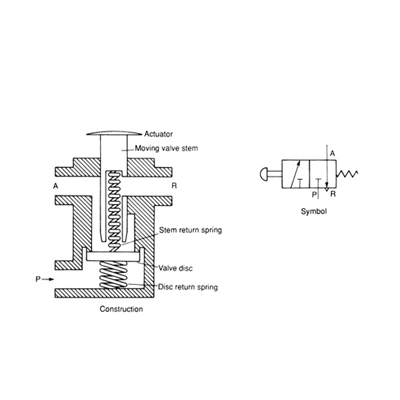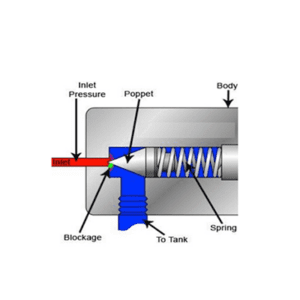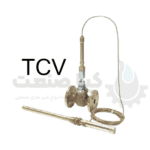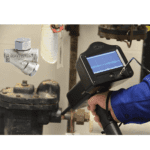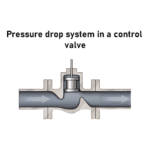What is a poppet valve?
Poppet valve is a type of valve that controls the amount and time of gas or steam flow into the engine.
It consists of an open-ended cavity or chamber, usually round or oval in cross-section, and a cap, usually disc-shaped, at the end of the shaft, known as the valve stem.
The valve face of this plug is usually ground at 45 degrees to seal against the valve seat of the housing edge.
To maintain alignment, the shaft passes through a valve guide.
How does poppet milk work?
Poppet valves are often found in pressure control equipment and applications.
They are directional control valves and are often high-flow, fast-acting valves.
This is due to the large flow channels through the primary body of the valve. Poppet valves can usually be opened quickly and are ideal for use in engines.
Poppet milk
The working principle of poppet milk
Think of the poppet faucet as a plug-in sink.
When you remove the cap, the flow path expands rapidly and dramatically.
The wide opening of the poppet valve allows fluids to pass through the valve quickly and easily.
Poppet valves usually consist of a flat metal disc attached to a long rod known as the valve stem.
A spring closes the valve when the stem is not pressed against it.
Depending on the application, the stem can be moved by a variety of actuators, including pilot operated, manual, mechanical, or electric.
Design and application of Poppet valve
A flat metal disk and a valve shaft are used in the design of poppet valves.
The valve stem is used to push down on the valve to open it, and the spring is used to close it when the stem is not pulling on it.
Depending on the application, the stem can be moved by a variety of actuators, such as pilot operated, manual, mechanical, or electric.
These valves have a narrow stem and a mushroom-shaped head and work in a piston engine by opening and closing the inlet and outlet valves in the cylinder head.
The engine moves the valves by pressing on the rods with cams and cam followers.
The lift and speed of the valve at which the valve opens are determined. The shape and position of the valve lifter cam determines the valve opening speed.
Application of Poppet Valve
The poppet valve does not require lubrication, so you can choose it without worrying about the chemical compatibility of the lubricant with different fluid applications.
It also qualifies them for use in any system that requires clean, dry air, such as medical applications.
Poppet valves tend to be self-cleaning because the large relative opening of the valve creates a large flow across it and removes contaminants from the valve surface.
Poppet valves are often used in single-acting cylinder engines to maintain pressure and release pressure.
They are also used in loading and unloading positive displacement pumps. Poppet valves can also be used as auxiliary valves in air tanks.
Poppet valve can be used in various fluid applications
It can be used in single cylinder engines
It is also used in loading and unloading positive displacement pumps
Used as auxiliary valves in air tanks
Advantages and disadvantages of poppet valves
Advantages of poppet valves
Due to the larger internal surface, it has a high flow rate.
Since the exhaust port is covered by the poppet before the flow, the positions can be properly controlled.
Product life is high
The poppet valve has a very fast response time, so the gate opens quickly when activated.
These valves are dust and dirt resistant.
Low maintenance and affordable
Disadvantages of poppet valves
The biggest disadvantage of these valves is the large amount of driving force that is required to operate them.
This strong driving force is required to resist the force exerted by the internal reset spring and compressed air.
Kiasanat is a supplier of industrial valves, manual valves, control valves, globe valves, pneumatic valves, steam traps, pressure relief valves, etc.

